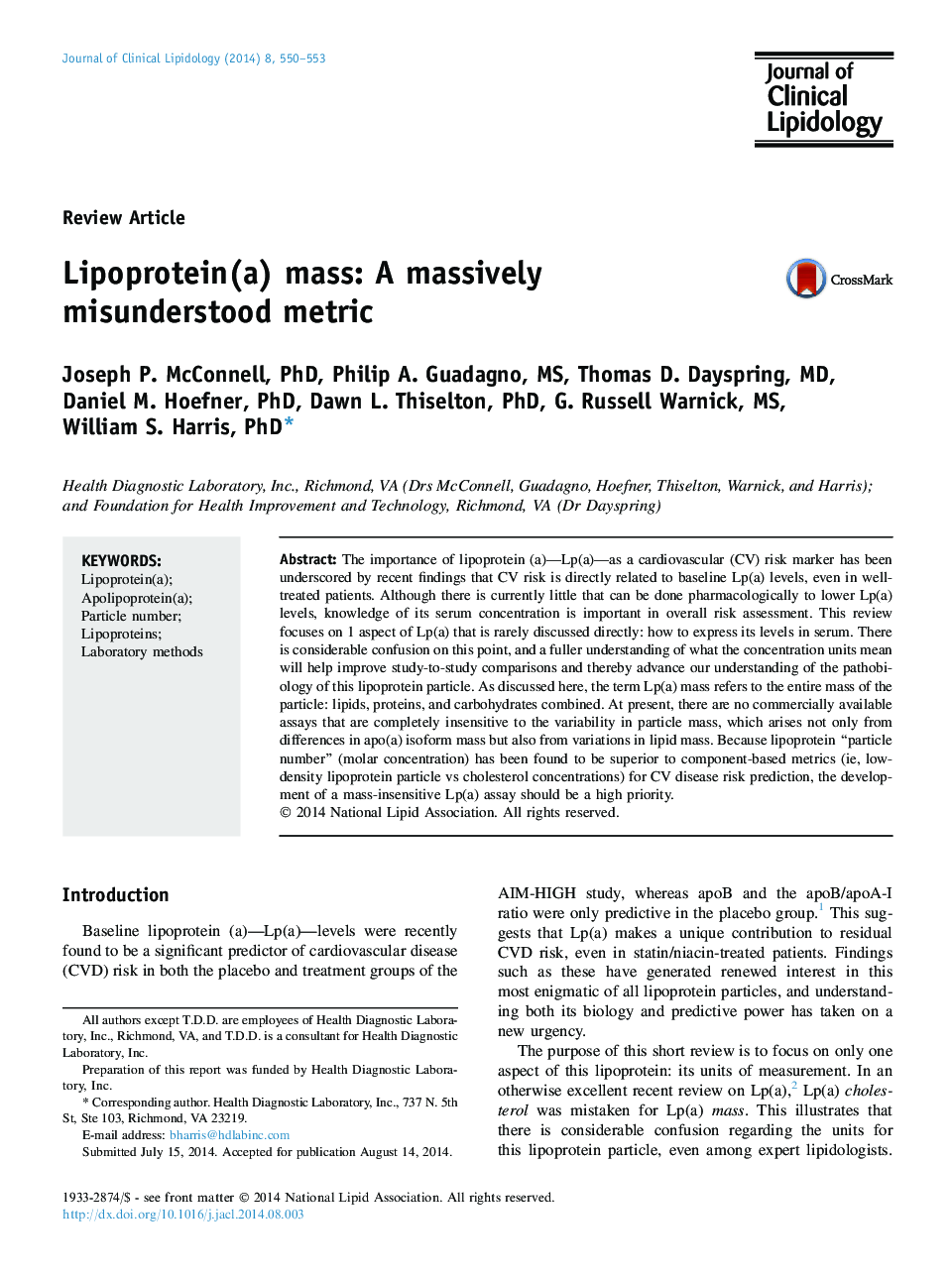| Article ID | Journal | Published Year | Pages | File Type |
|---|---|---|---|---|
| 5985828 | Journal of Clinical Lipidology | 2014 | 4 Pages |
â¢Lp(a) is an independent marker of CV disease risk.â¢Lp(a) serum concentrations can be expressed in several ways.â¢The most common measurement unit is “mass,” but its meaning is unclear.â¢Chemical analysis indicates that “Lp(a) mass” refers to the entire particle.â¢Lp(a) particle concentration (nmol/L) is the preferred reporting metric.
The importance of lipoprotein (a)-Lp(a)-as a cardiovascular (CV) risk marker has been underscored by recent findings that CV risk is directly related to baseline Lp(a) levels, even in well-treated patients. Although there is currently little that can be done pharmacologically to lower Lp(a) levels, knowledge of its serum concentration is important in overall risk assessment. This review focuses on 1 aspect of Lp(a) that is rarely discussed directly: how to express its levels in serum. There is considerable confusion on this point, and a fuller understanding of what the concentration units mean will help improve study-to-study comparisons and thereby advance our understanding of the pathobiology of this lipoprotein particle. As discussed here, the term Lp(a) mass refers to the entire mass of the particle: lipids, proteins, and carbohydrates combined. At present, there are no commercially available assays that are completely insensitive to the variability in particle mass, which arises not only from differences in apo(a) isoform mass but also from variations in lipid mass. Because lipoprotein “particle number” (molar concentration) has been found to be superior to component-based metrics (ie, low-density lipoprotein particle vs cholesterol concentrations) for CV disease risk prediction, the development of a mass-insensitive Lp(a) assay should be a high priority.
Graphical AbstractDownload high-res image (307KB)Download full-size image
